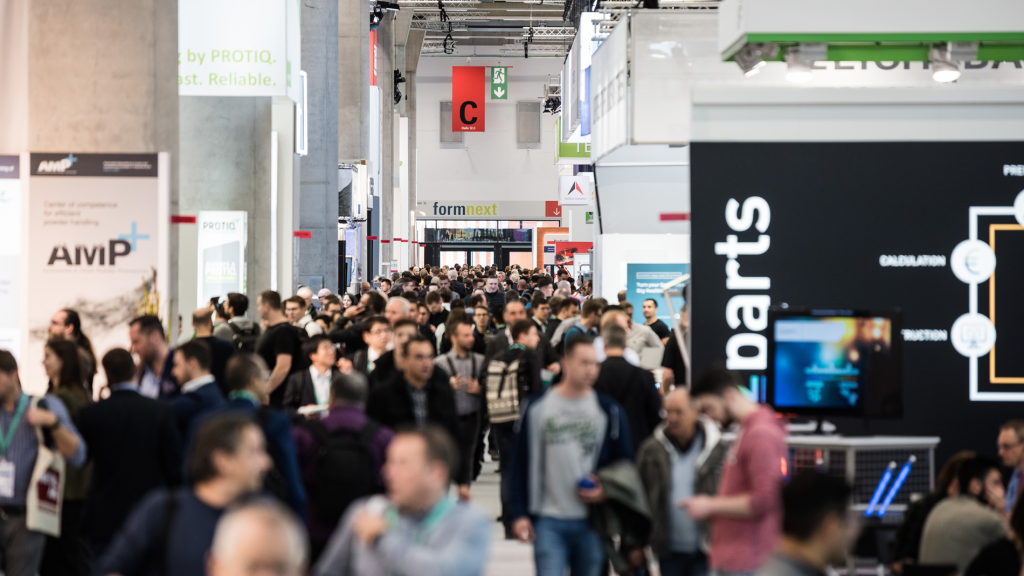Packed to the brim with exciting new 3D printing technologies, Formnext remains the best place to get an overview of where the technology is heading.
Four huge halls, crammed wallto-wall with machines, materials and peripherals, provided a lot to take in, but one theme was clear: this year, the technology is racing, full steam head, towards mass production.
Previously, this has meant ramping up machine print speeds and build volumes and embracing more standardised materials.
However, 2019’s pitch was different: vendors are looking to transform additive manufacturing through software.
At the front end of product development, a number of interesting approaches to topology optimisation and generative design were on show.
The likes of Paramatters, Gen3D and Ntopology have all evolved quickly, even from where they were earlier in 2019, and can now present a dynamic approach to topology optimisation where a 3D-printed part is the outcome.
These standalone tools all show a deep understanding of where the challenges lie, and are happy to let compute power do the talking, all while presenting the user with an uncluttered and intuitive user interface.
Established players
That’s not to say, however, that established simulation and analysis players have nothing new to offer in this field.
MSC unveiled its latest generative design software, MSC Apex Generative Design.
This German start-up, acquired by Hexagon in 2017, might be young, but it has already established a clear roadmap.
Once fully fledged, it will have the ability to take in simulation from across the full portfolio of its parent company.
So users can expect materials and composites data from Digimat to play a part; access to Simufact’s process simulation software; even links to systems simulation tools like Adams.
Add into the mix quality assurance of printed parts with Hexagon’s latest acquisition, Volume Graphics, and you’re looking at pretty comprehensive arsenal of tools.
Meanwhile, Altair’s latest product, Inspire Print3D, proved equally eye-catching.
This takes the company’s experience of topology optimisation in the design stages, and applies the appropriate design rules for each manufacturing method – be it 3D printing, conventional casting or machining – in order to alter the shape of the part accordingly and automatically.
Big build-up
Build process software was everywhere at Formnext.
This is the piece of the puzzle that takes a design, runs checks, spots problems, figures out the best orientation at which the part should be built, and assists with the creation of support structures.
Bridging the link between CAD and print has long been a bit of a dark art, the realm of expensive software add-ons or the machine operators themselves.
Dyndrite and Oqton are two names looking to smash the market wide open.
Dyndrite has developed its own software kernel, allowing it to use GPU-powered technology to directly import native CAD files (or the most complex STLs) and output to any 3D printing process.
It uses CAD splines and metadata to improve the speed and quality of the workflow and this is passed directly into the printed parts.
It’s fiercely effective, using all your computer’s hardware power to get a job done better and faster, all the while packaged up with a user interface that’s easy to understand and work through.
Oqton, meanwhile, drafts in more artificial intelligence (AI) to its cloud-based methods, connecting manufacturing equipment through the industrial Internet of Things (IIoT), and offering full, closed-loop manufacturing.
On the shop floor, Oqton will blow minds with itstructures.
Its best trick is its AI-based ability to learn from your best machine operators, remember all that stored-up knowledge and find ways to improve on it.
Old guard
The longstanding figureheads of 3D printing are not sitting still, although change is harder to jump on when you’re towing behind you a lifetime of legacy equipment and acquired teams and technologies.
3D Systems looks set to continue the successful evolution of its 3D Sprint and 3DXpert build process software.
Its aim is to incorporate more of its medical and healthcare expertise into its wider manufacturing software, giving it greater powers over the wrangling of generative design’s organic forms.
Stratasys’ new GrabCAD Shop line looks to connect machines and print schedules across workshops, while Materialise continues to finetune its Magics software line, still the industry standard for many professional machines.
Yet all of these established companies will have been taking notice of the newcomers and must continue to do so.
Off-the-record remarks made at the event point to a speeding-up of 3D printing in ways that sound remarkable, verging on witchcraft.
So, while 2020 will see plenty of fancy new hardware, the real changes may be making their impact felt well before print runs have even begun.






